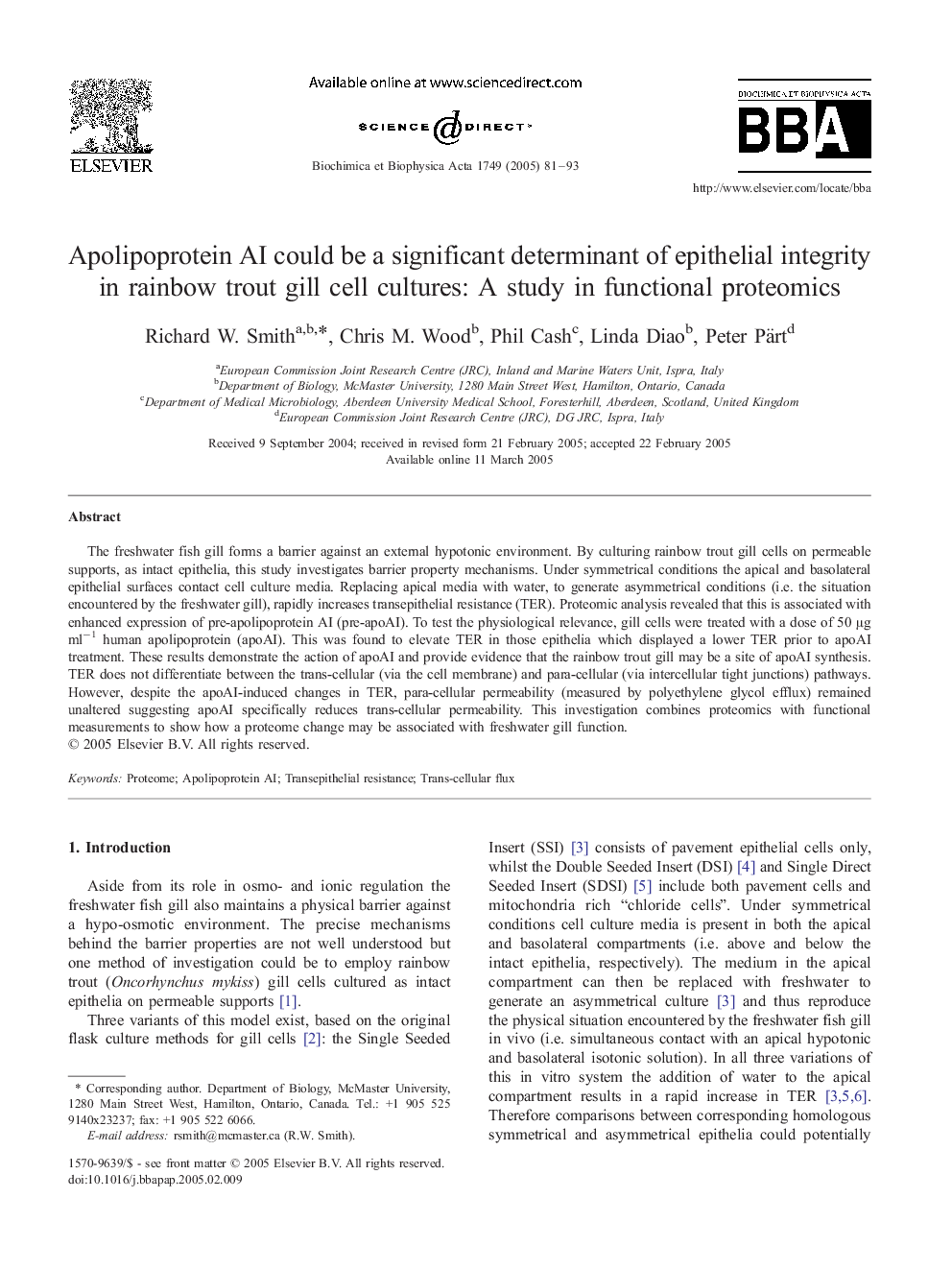| Article ID | Journal | Published Year | Pages | File Type |
|---|---|---|---|---|
| 10537959 | Biochimica et Biophysica Acta (BBA) - Proteins and Proteomics | 2005 | 13 Pages |
Abstract
The freshwater fish gill forms a barrier against an external hypotonic environment. By culturing rainbow trout gill cells on permeable supports, as intact epithelia, this study investigates barrier property mechanisms. Under symmetrical conditions the apical and basolateral epithelial surfaces contact cell culture media. Replacing apical media with water, to generate asymmetrical conditions (i.e. the situation encountered by the freshwater gill), rapidly increases transepithelial resistance (TER). Proteomic analysis revealed that this is associated with enhanced expression of pre-apolipoprotein AI (pre-apoAI). To test the physiological relevance, gill cells were treated with a dose of 50 μg mlâ1 human apolipoprotein (apoAI). This was found to elevate TER in those epithelia which displayed a lower TER prior to apoAI treatment. These results demonstrate the action of apoAI and provide evidence that the rainbow trout gill may be a site of apoAI synthesis. TER does not differentiate between the trans-cellular (via the cell membrane) and para-cellular (via intercellular tight junctions) pathways. However, despite the apoAI-induced changes in TER, para-cellular permeability (measured by polyethylene glycol efflux) remained unaltered suggesting apoAI specifically reduces trans-cellular permeability. This investigation combines proteomics with functional measurements to show how a proteome change may be associated with freshwater gill function.
Related Topics
Physical Sciences and Engineering
Chemistry
Analytical Chemistry
Authors
Richard W. Smith, Chris M. Wood, Phil Cash, Linda Diao, Peter Pärt,
